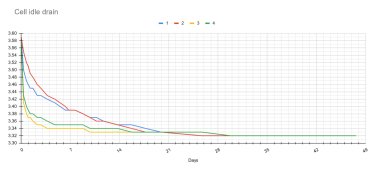SlimyLemur56
New Member
- Joined
- Feb 20, 2020
- Messages
- 27
In feb 2020 I bought 4 120ah cells off aliexpress. Pretty sure at the time I tested each cell and the voltages were nominal. It came with cheesey m4 terminals which stripped immediatly (actually the screw holes were tapped badly and it stripped just trying to get the screws it came with to go in) and I never used the battery once, never put a single charge or discharge through it.
I finally got around to trying to do something about the stripped terminal and I made all the preparations, made some flat bottom drills and retapped the hole to m8 and put a stud in it. Then I rechecked all the cells and realized that while 2 of them read 3.x volts, 2 of them read .6xx volts.
If a 3.2v cell is reading .6/.7 volts, is it damaged beyond repair? What I'm really wondering is should I even bother to try to recharge it? Would it be dangerous to do so?
Should I just accept they are toast from sitting unused for 1.5 years and fork over the cash for a new battery, or is there some hope there's a way to recharge them and get some low duty use out of it? If there's any hope, how would I safely attempt to put a charge in them? The voltage difference between the cells is so high I'm not sure if I should trust a (daly) bms to balance them while charging.
I finally got around to trying to do something about the stripped terminal and I made all the preparations, made some flat bottom drills and retapped the hole to m8 and put a stud in it. Then I rechecked all the cells and realized that while 2 of them read 3.x volts, 2 of them read .6xx volts.
If a 3.2v cell is reading .6/.7 volts, is it damaged beyond repair? What I'm really wondering is should I even bother to try to recharge it? Would it be dangerous to do so?
Should I just accept they are toast from sitting unused for 1.5 years and fork over the cash for a new battery, or is there some hope there's a way to recharge them and get some low duty use out of it? If there's any hope, how would I safely attempt to put a charge in them? The voltage difference between the cells is so high I'm not sure if I should trust a (daly) bms to balance them while charging.





